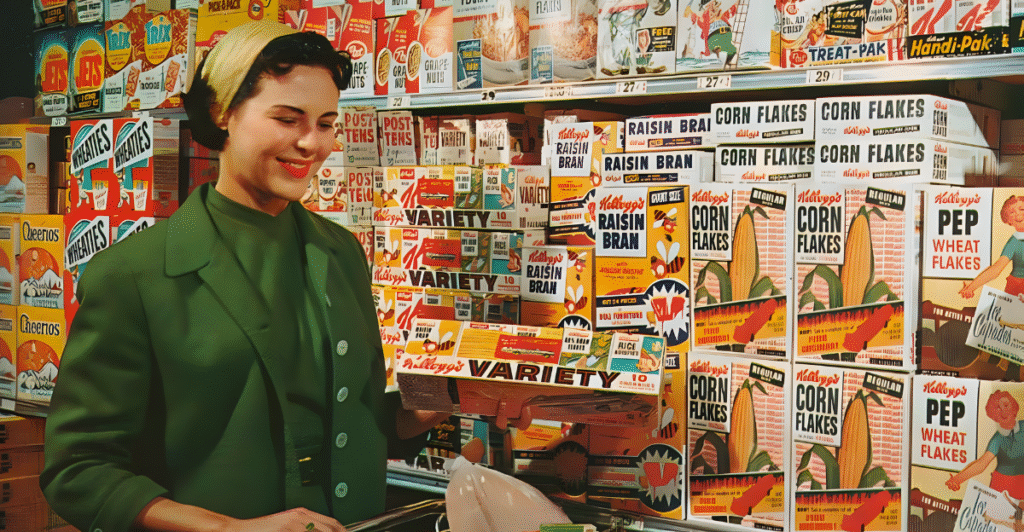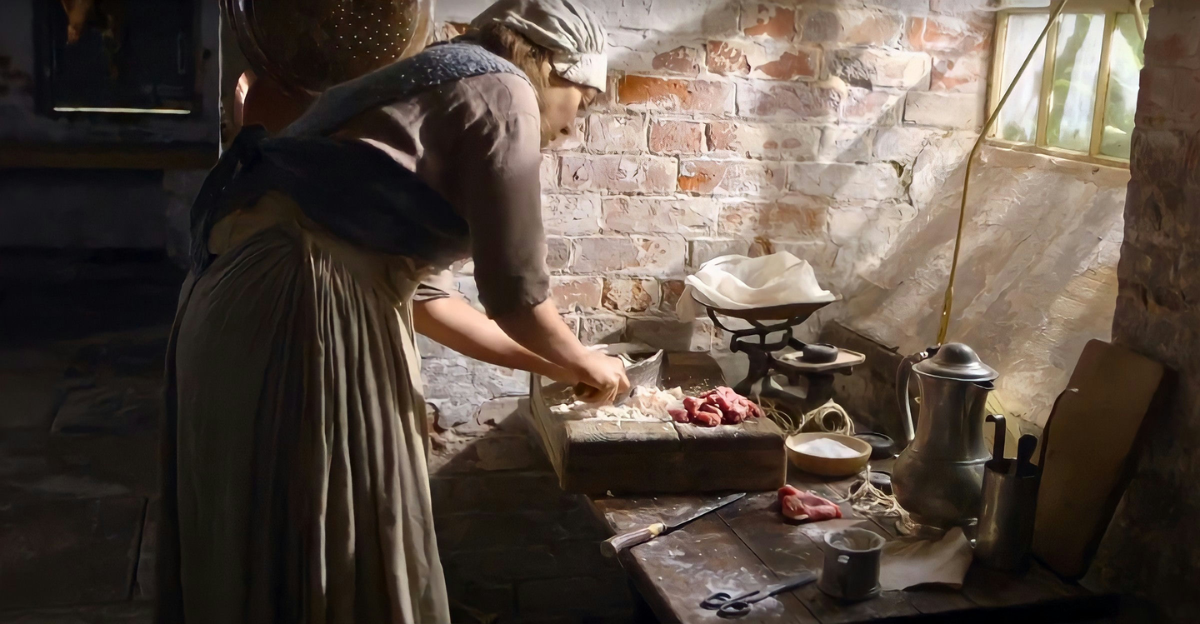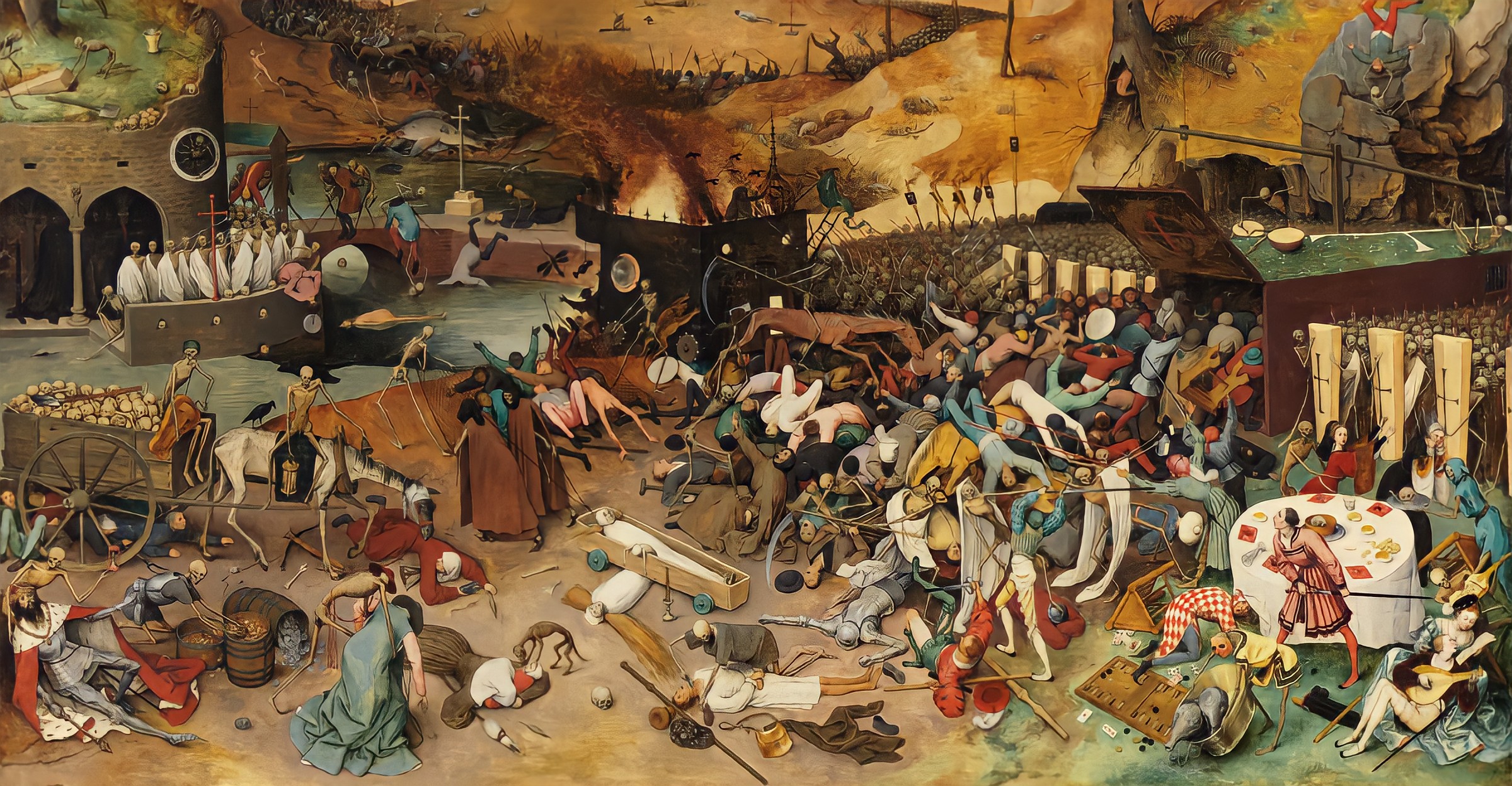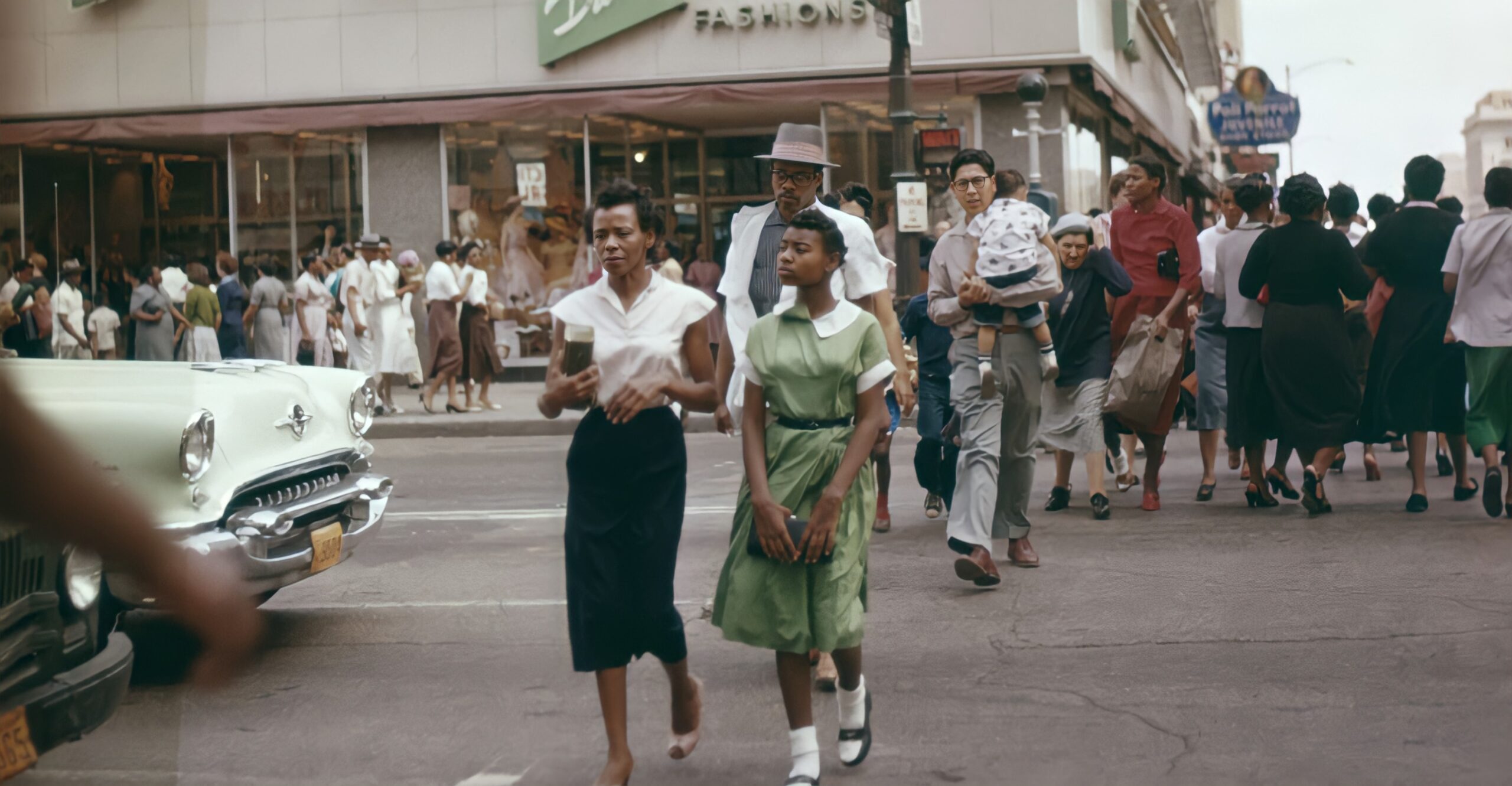
American groceries have changed drastically over the last 75 years, with one of the most notable differences being the inflation of products. Between 1950 and 2025, items have skyrocketed due to inflation, but there are other economic factors in play that have influenced prices, such as cultural shifts, technological advancements, and changing consumer habits.
We’re looking back at the heyday of Jell-O salads and TV dinners to the organic produce and premium snacks of today. Some items have fluctuated in price a great deal, with certain products being far more accessible than they were 75 years ago.
Ground Beef

Ground beef helped to fuel the rise of the hamburger, becoming an American staple. Seventy-five years ago, ground beef was about 40 cents per pound, and today, prices fluctuate but are, on average, about $5.50 per pound.
This increase in price reflects the changes in cattle farming, feed costs, and how consumer demands have shifted, with many buying grass-fed or organic beef.
White Bread

White bread is another staple that’s not only an essential grocery item in America but around the world. A loaf of white bread costs about 14 cents in 1950, but today it costs around $3.50.
Bread has steadily increased in price and remained an accessible source of food for the masses, while more luxurious products have gone up by much more. It is important to keep basic, sustainable sources of food at an affordable price.
Coffee

Coffee is another product that has been ingrained in American culture. Millions of Americans can’t start their day without their preferred cup of coffee. In 1950, the coffee culture was somewhat similar, and prices per pound were around 75 cents.
Today, specialty coffee beans can range from $10 to $15 per pound. The price increase is due to a growing demand and the rise of premium coffee culture.
Eggs

Eggs are a crucial part of household breakfasts across the country, and this was the case even in 1950, with the prices of eggs per dozen being 60 cents.
Today, eggs will cost anywhere from $3.50 to $4.00, with avian flu outbreaks and supply chain disruptions causing a temporary higher price in these products. Over the years, production has become more efficient, and animal welfare regulations have increased.
Bananas

Bananas in 1950 would have cost the consumer, on average, around 10 cents per pound. Many exotic fruits have only increased moderately in price due to global supply chains being set up and improved refrigeration.
Today, bananas typically cost around $1.20 per pound, making them an affordable staple.
Canned Tuna

In 1950, Canned tuna typically cost 35 cents per can and was a staple in tuna noodle casseroles. Although these casseroles may have decreased in popularity, the demand for tuna itself has gone up, and consumers now prefer higher-quality food with a higher price as a trade-off.
Today, a can of tuna can go for $3.50 to $4 a can. The price rise could also be due to stricter fishing regulations and sustainability efforts.
Jell-O

Jell-O is an iconic part of mid-century Americana. A box of Jell-O sold for around 10 cents 75 years ago.
Today, gelatin products are less popular, showing a change in consumer habits and changing health trends that are shifting away from processed food products. Jell-O is now priced at around $2.50.
SPAM

SPAM gained wide popularity due to its long shelf life, making it an ideal wartime ration. SPAM used to cost around 59 cents in the 1950s, but in the last 75 years it has gone up to $4.50.
Today, SPAM is more of a niche product and a retro specialty rather than a staple, reflected in supply chain complexities and less of a presence on the shelves.
Butter

Butter used to cost about 75 cents in the 1950s, but it costs anywhere from $4 to $6 today, with a wider variety of brands on the shelves. The price growth is due to dairy industry shifts, health trends starting to shy away from certain products, and supply disruptions.
Butter has shifted from an important part of American households to more of a rarity, used mostly in baking today.
Hot Dogs

Hot Dogs are an important part of American culture that has kept them popular over the last 75 years. They can still be purchased by vendors on street corners or at ballgames and can be found in abundance in stores today.
They cost about 20 cents in 1950 and have risen to around $2.50 to $3 today. Convenient and tasty food maintains a cultural significance in America despite changing dietary perceptions and price increases.
Macaroni Cheese

Macaroni and cheese has always been an easy go-to meal in American homes. In the 1950s, making a macaroni and cheese dish from scratch only cost about $1.
Today, the most popular form of macaroni and cheese is boxed products that cost anywhere from $3 to $4. They kept their status as an easy-to-prepare and affordable comfort food, with new premium and organic options appearing in the market.
Ice Cream

Ice cream has been an important American treat for over a century, playing a pivotal role in keeping U.S. soldiers’ morale high in WWII. The staple cost about 5 cents in 1950, and today it is between $3 and $5.
The large increase in price is primarily due to ice cream evolving into a premium treat, with many brands boasting about artisanal craftsmanship, shifting the everyday treat into a luxury indulgence in many markets.
Sugar

Sugar is an essential staple that every American household has in its pantry. Sugar is used in anything from baking to morning coffee. In 1950, the product cost 10 cents per pound, and now it is around $0.70 to $1.20.
Sugar has seen a low price increase, which highlights the stability of commodities in the market.






